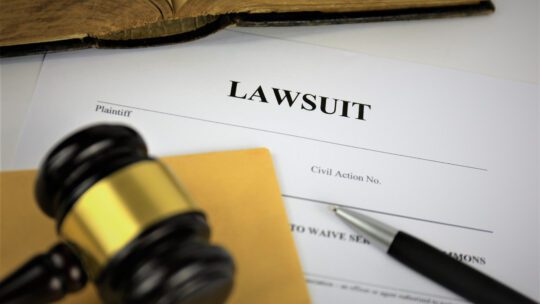
A big challenge to handling media relations around a lawsuit is understanding the rise and fall of media interest as the litigation drags on (as it typically does).
One way to think about it is to keep track of standard mileposts in litigation that will be most newsworthy to a reporter. It helps for non-lawyers to have a grasp of civil procedure: complaint, motion to dismiss, discovery, motion for summary judgment, trial and verdict.
To better understand where the “media moments” are in a particular piece of litigation—and best communications practices—below is a short description of the various stages.
Complaint, Answer, Countersuit
The filing of a complaint usually sets the media in motion, particularly in litigation relating to a high-profile issue or dispute. If you’re the defendant, unfortunately, the original story may be heavy on accusations from the plaintiff’s complaint, with only a short window of time for you to provide your response.
That’s why, if you know a lawsuit is brewing, it makes sense to work on your media statement about the potential filing ahead of time to get more play in the first story.
The more prepared you are before a lawsuit is filed, the faster you can get the right response in the hands of a reporter. It can often mean the difference between a response that appears in paragraph three and one that’s buried toward the end of a negative article.
The answer to a lawsuit, which a defendant is required to file shortly after the original complaint, isn’t usually newsworthy unless it comes with a countersuit—an entirely new lawsuit filed by the defendant against the plaintiff in response to the original complaint.
Media tend to love countersuits, which give them a whole new set of facts and allegations to write about. As a strategic move, therefore, a well-orchestrated countersuit might be considered—not just as a legal maneuver but as a way to reframe the “storyline” around the litigation and regain at least some of your control over the public debate.
Motion to Dismiss
Prior to answering, the defendant can move to dismiss on the ground that the accusations in the complaint don’t rise to a claim for which relief can be granted or contain some other procedural defect. A reporter could write on the attempt to nix the suit (and the plaintiff’s response to that) or wait until the judge has ruled.
If you, as the defendant, lose your motion to dismiss and the litigation will carry on, it’s important to emphasize in your media outreach that the ruling isn’t on the merits of your opponent’s case; the court isn’t saying it agrees you infringed that patent but only that the plaintiff’s complaint states an actual legal claim (or that it doesn’t contain the procedural defects you said it did).
Careful news outlets will point that out. The public needs to understand that just because a defendant loses a motion to dismiss, it doesn’t mean it’s going to lose once the facts are tried in court.
Discovery
If the dismissal motion fails, the defendant will answer and the parties will enter the discovery, or evidence-sharing, phase. Most reporters won’t be particularly interested in this phase unless it’s a big case and there are juicy battles over access to certain documents or witnesses.
Remember that, especially for federal cases, where dockets are kept on the online Pacer system, reporters monitor what’s happening in the litigation in case something newsworthy pops up. Communicators should be made aware of such a filing to prepare for media interest.
More specifically, a litigant can sometimes use the docket to generate coverage based on the “headline” to a motion and its preliminary statement. Want to increase the chances of media coverage of your filing even without a press release or press conference? Give it the right news hook.
Motion for Summary Judgment
The next stage of media attention will be the motion for summary judgment, similar to (and sometimes confused with) a dismissal motion. But with a summary-judgment motion, parties ask the judge to rule (in their favor, naturally) without a trial because, now that all the discovery is done, it’s clear there are no factual disputes for a jury to decide (or so they try to argue).
Those motions, or at least the judge’s ruling on them, could be viewed as a story. Here (especially if you lose), your messaging will have to deal with the fact that the decision actually is on the merits of the case. If the judge declines to decide the case at that point, it will go to trial.
The Trial
Very few lawsuits go to trial, of course. Depending on the prominence of the case, reporters may cover only opening statements, closing arguments and the verdict. A big case could also bring daily stories or at least coverage of significant witnesses, such as a CEO.
Doing the media relations around a trial is a separate story in itself. Suffice it to say that communicators should be prepared with talking points for various aspects of, and witnesses at, the trial, in addition to the ultimate verdict.
While litigation has the advantage of a slower pace than the standard crisis, it does have its media-enticing way stations for the communicator to monitor.
James F. Haggerty is president and CEO and Thom Weidlich is managing director of PRCG Haggerty.
